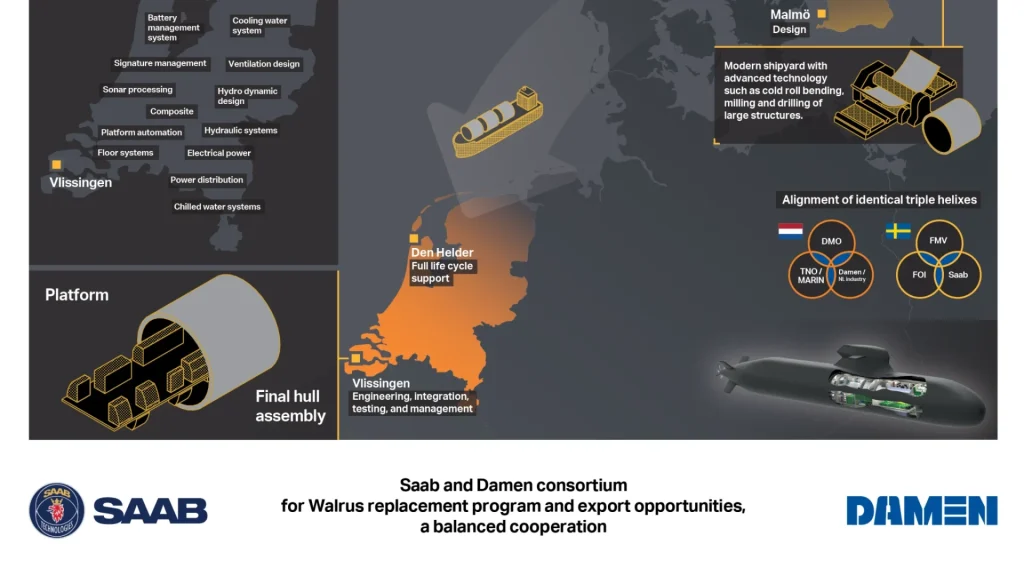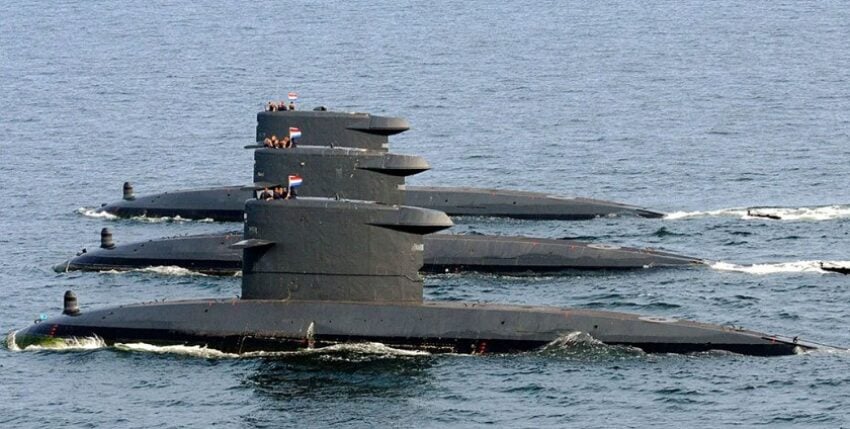Available since 30 September 2022 on the website of the Dutch Ministry of Defence: In mid-November 2022, the Invitation to tender (request for quotation) was sent to the three competing shipyards. The Hague expects Damen, Naval Group and tkMS to submit a proposal by summer 2023 for four submarines - considerations to reduce the number of units were rejected.
In a letter to the Second Chamber of the Dutch Parliament, State Secretary Christophe van der Maat explains the procedure. It will take some time before the evaluation is finalised. "The submarine is one of our most important strategic weapon systems. ... It is an important project and involves a lot of money. That's why we took no risks in the request for proposal to determine what kind of submarine we want and how much we are willing to pay for it. In addition, we want the boat to be able to be armed (author's note: this refers to the free choice of armament; there should be no link between manufacturer or country and the possible armament), that the boats are delivered on time and that Dutch industry is involved in the construction and maintenance."
The Walrus succession project in the Netherlands is thus entering the penultimate phase before a final decision is made. Decision. The three remaining shipyards now have until next summer to prepare and submit their calculations. After that, some time will pass in the Netherlands before a decision is made. So at the end of 2023 or in spring 2024.
According to earlier announcements by the ministry, the project is expected to cost more than 2.5 billion euros. The media initially put the figure at more than 3.5 billion euros. The usually well-informed Dutch blogger Jaime Karremann is endeavouring to get "De Telegraaf" to quote 4.5 billion euros. This amount has not yet been confirmed. DMO, the Dutch Defence and Procurement Agency, believes that the Project sum secret so as not to influence the negotiations, says Karremann.
To what extent the Sensor and effector equipment is priced in remains a question. The Dutch Navy wants to make its own choice and not enter into a commitment to a supplier favoured by the future manufacturer. Exceptions exist, for example, in the design of the sonar or the Combat Management System (CMS), as this can determine the design. What is certain is that the Dutch Navy will stick with the US Torpedo Mk 48. No decision has yet been made about the missile armament, which is expected to be cruise missiles.
In any case, the project is already a major challenge. Like their predecessors, the Walrus successors should Can be used worldwide be. This selection criterion was reduced by a ministerial requirement from 2019, when the first problems became apparent, to the extent that 'worldwide' is no longer synonymous with 'based on Den Helder'. The Netherlands swallowed the restriction "worldwide deployment with support from a forward operating base" (FOB). However, it remains decisive for The Hague - as does the now relativised multi-mission capability.
The Timetable has slipped anyway. While it used to be said that the contract would be signed in 2022, the first boat would be available in 2028 and the current Walrus class would be fully replaced in 2031, the first two boats of the new Walruses are not due to be delivered until between 2034 and 2037. In April 2022, the Ministry of Defence announced that the inevitable extension of the service life of the Walrus class would be accompanied by the cannibalisation of the two oldest boats. This would ensure the operational capability of the two remaining boats.
Europe-wide tender with conditions in favour of domestic industry
The Hague had opted for a Europe-wide invitation to tender along §346 of the EU Treaty. The involvement of the Dutch shipbuilding cluster, including SMEs (small and medium-sized enterprises) and research institutes, was to be given great importance for planning, construction and subsequent maintenance. To protect vital maritime infrastructure, the then State Secretary Barbara Visser stated in a letter to Parliament in December 20219: "Dutch shipbuilding must achieve the best possible position in the supply chains of foreign shipyards. A good position as a supplier offers Dutch companies and knowledge institutes the opportunity to expand their own knowledge and skills, which also benefits the defence organisation."
The competitors had already more or less adapted to this. tkMS did not just compete with a design based on the U212 CD. Alluding to Silicon Valley, the Kiel-based company wants to develop the Den Helder region into a "submarine valley" and secure Dutch industrial participation. The Helder is to develop into a European hub for underwater technologies, led by the Dutch navy and industry. 500 direct and 1500 indirect jobs are to be created in North Holland.
Saab-Kockums In contrast, it appears to have a home advantage in the connection with the Dutch Ladies which is integrated into the Dutch shipbuilding cluster. In the SAAB company presentation for the Walrus succession, the Swedes recommend themselves with the SAAB-DAMEN consortium and the alignment of identical triple helixes: Procurement Authorities - Research/Development Institutes - Industry.

Naval Group has teamed up with the local shipbuilder Royal IHC (specialising in the development and construction of ship dredgers and accessories for the offshore industry). It is believed that the French company submitted the design of the Attack class, a modified Baracuda design, with which it was successful in Australia until the Australians pulled out.










